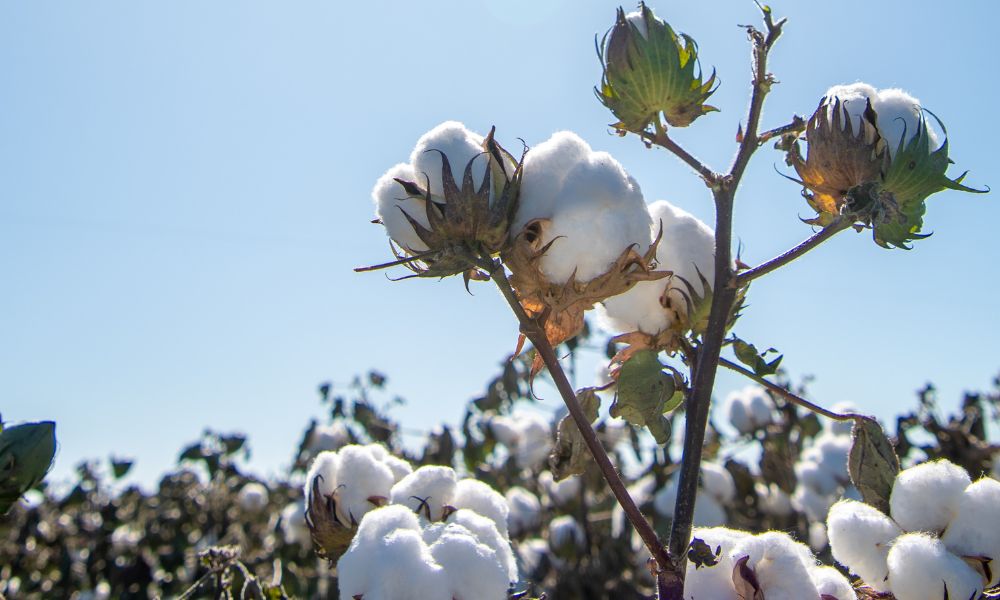A Season to Plant Cotton — and Flags — in the Ground
April 19, 2023
This week we’re celebrating Earth Day, the arrival of planting season in the U.S., and how cotton supports brand ESG goals.
How is your business celebrating Earth Day? In the U.S., we’re watching cotton farmers begin to plant their crop. The planting season typically starts around this time if weather conditions allow. Every year, the process provides a visual reminder that natural cotton fiber and the farmers who grow it are supporting brands’ and retailers’ environmental “flags” — the commitments and values they stand for publicly.
Supporting climate goals
Materials matter for companies that are pursuing greenhouse gas (GHG) emission reduction strategies and commitments. Addressing greenhouse gas emissions is a major component of sustainable cotton production.
Climate-smart agriculture starts from the ground up. As cotton plants grow, the natural fiber captures carbon dioxide from the atmosphere. Many U.S. cotton growers and researchers aim to decrease GHG emissions in cotton agriculture while enabling cotton plants and the soil to capture and sequester more carbon from the atmosphere.
Cotton farmers increase their soil carbon (a common measurement of soil health) using regenerative agriculture practices such as no-till and cover crops. These practices improve a cotton crop’s chances for a higher yield while reducing the need for fertilizer inputs and heavy equipment use.
Reduced equipment use is perhaps the more obvious climate benefit. Less total fuel is required to operate the machinery if a grower does not till the soil regularly and if the soil is healthy enough to reduce the number of fertilizer applications.
The connection between fertilizer and climate takes the form of excess nitrogen that is lost into the water or air, where it can become nitrous oxide. U.S. growers have prioritized efficient fertilizer use for decades, and researchers are continuously exploring strategies for farmers to keep improving.

Supporting circularity goals — without plastic
Whatever a brands’ product category, cotton provides opportunities to advance the circular economy by pursuing materials that are recyclable and biodegradable.
Well-made cotton textiles are durable, which makes them easy to reuse in the secondhand market. Once cotton textiles have reached their useful lifespan, companies can choose to recycle cotton for use in a diverse array of products, including nontextile products like insulation.
 As a natural fiber grown from the earth, cotton can also be returned to the earth. Using international standards to assess cotton biodegradability, researchers have studied how cotton textiles and wet wipes degrade compared to synthetics in a variety of environments. Cotton can degrade in industrial compost,1 wastewater, salt water and fresh water environments, and it also degrades faster than manufactured cellulosic fibers like rayon and oil-based synthetics.2 Unlike synthetic textiles and plastic-based personal care products, cotton’s natural fibers do not contribute to a long-lasting pollution problem.
As a natural fiber grown from the earth, cotton can also be returned to the earth. Using international standards to assess cotton biodegradability, researchers have studied how cotton textiles and wet wipes degrade compared to synthetics in a variety of environments. Cotton can degrade in industrial compost,1 wastewater, salt water and fresh water environments, and it also degrades faster than manufactured cellulosic fibers like rayon and oil-based synthetics.2 Unlike synthetic textiles and plastic-based personal care products, cotton’s natural fibers do not contribute to a long-lasting pollution problem.
U.S.-based researchers continue to explore new applications for cotton to reduce the use of plastic by replacing it with natural, biodegradable materials. In 2022, Cotton Incorporated unveiled the first use of cotton in 3D printed outdoor gear like tent stakes and fishing lures.
Supporting brands with data
 Information about cotton abounds, but not all of it is accurate or easy for brands and retailers to interpret. The Cotton LEADS program seeks to help brands and retailers understand cotton’s environmental footprint and incorporate cotton’s sustainability story into their own. Resources include research reports, life cycle analysis, webinars and partner tools and content.
Information about cotton abounds, but not all of it is accurate or easy for brands and retailers to interpret. The Cotton LEADS program seeks to help brands and retailers understand cotton’s environmental footprint and incorporate cotton’s sustainability story into their own. Resources include research reports, life cycle analysis, webinars and partner tools and content.
The U.S. cotton industry shares resources and research with other growers and scientists around the world, too. The data generated from studies in the U.S. increases the world’s overall knowledge of climate-smart agricultural practices.
Investors and consumers alike continue to hold brands and retailers accountable for their ESG commitments. As your brand celebrates Earth Day, consider how sustainably produced cotton can help you grow your progress toward important environmental commitments.















Recent Comments